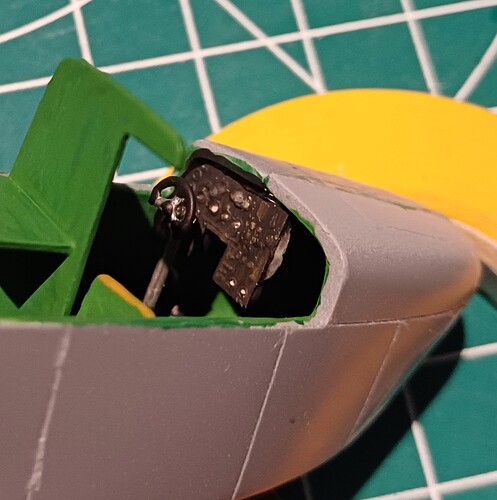Hi Everyone,
There is certainly some interesting builds going on here!
When I first saw the proposed group build/campaign, I was pretty excited. A look through the stash found plenty of candidates, however, with the Great War campaign in play, I wanted something a little different. For those who know, I have a thing for aircraft of the interwar and first half of WWII. I also, for some reason, have an affection for early IJN aircraft. I happened to be looking on Ebay to see how inflation has affected the hobby when I noticed an interesting plane from a company I’d not heard of before. Take all of that, with a price that fit the budget, and my candidate for this campaign appeared in a short period of time. This was still months before the start of this campaign, so after reading the instructions, a little research and anticipation the kit went on the self to wait for the go date. Typical of building style, when the gun went off, I was overloaded and couldn’t get this one started. Now that the bench has cleared, it’s time to go!
I chose ABK Models Nakajima A2N2 Navy Type 90-II Carrier-Based Fighter (kit # 4004).
The A2N was Nakajima’s answer to the call for a Carrier-based fighter, for the IJN’s first carriers. It would appear that Nakajima leaned heavily on the design work of the Boeing Model 69 and 100, both of which had been imported to Japan in the 1920’s. Upon meeting the criteria of the IJN, the agile A2N was accepted and went into production in 1930. Between 1930 to 1935 a total of 106 planes were delivered, between 1932 to 1937 they served aboard the carriers Hosho, Kaga, Akagi and Ryujo. The A2N saw limited action during the Sino-Japanese War in 1937, though found itself being replaced by the A5N “Claude” soon after. It had a relatively short service life, though was very influential to the gaining of the IJN’s fighter pilots experience for carrier operations. Making it a historically significant aircraft.
ABK Models (formally, A.B.&K) has been around since 2013 per Scalemates. So, I was a bit hesitant at first, though a visual using my Mk I optics showed it to look pretty good. Additionally, how could one refuse? I didn’t.
The ABK kit comes with 63 parts,1 clear, 2 resin exhausts and all are finely molded.
The interior is quite simple and built up nicely. I must admit there’s very little information out there, so, I went with the instructions. Atoke blue was the call for the interior, and I did some dry brushing to help things along. In the end one can’t see a thing. Hmmmphh,
Salified, it was time to close the fuselage, this was the first hiccup. The floorboard is a bit too wide, so, doing sanding strokes with 320 grit at 5 times per side, remedied the problem in short order.
With the fuselage closed up, the lower wings went on. These fit great on the topside, though there is a bit of a gap on the underside.
A final go over to check for seams and it’ll be off for a two tone aluminum paint job!
Till next time, be safe, wash your hands with soap and water, and above all have fun!








































